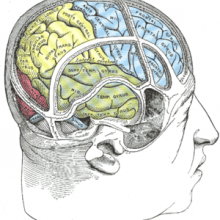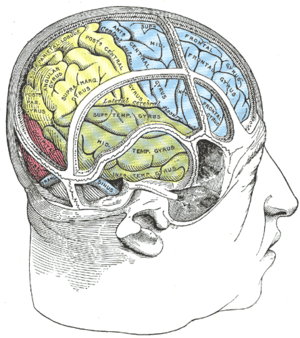In this Naked Scientists NewsFlash, we hear how parenthood can extend your lifespan and discover the genetic recipe for a red blood cell. Plus, repairing damaged hearts with micro RNA, and a new way to share scientific information...
In this episode

00:21 - Is having children good for you?
Is having children good for you?
This is a difficult area to research, because you can't conduct a randomised trial like you normally would to test a hypothesis. But a new study gets to the bottom of this tricky question. The verdict? Having children seems to lower your chance of having a long life!.
What scientists would like to do is take a group of people, and randomly assign  some of them to have children, and others not to, but this isn't possible, or ethical.
some of them to have children, and others not to, but this isn't possible, or ethical.
Prof Agerbo and colleagues from Aarhus University Denmark attempted to get around this problem by using a natural experiment. They followed couples undergoing IVF treatment, and examined the differences between those for whom the treatment was successful, and those for whom it wasn't.
Why is this an improvement on previous studies? Previously, couples who are childless out of choice and those who are unable to have children have been put in the same category- this study avoided this, as all childless couples had been through the IVF process, so were not childless by choice.
They also looked at those parents who adopted children, and compared them to childless couples, and those who had a biological child.
Criticisms of previous studies have suggested that the differences found may be due to the fact that not being able to have children is an indicator of poor health.
In this study, none of the participants, even those who ended up with children, had been able to conceive naturally, reducing the risk of this being an important factor in the findings.
So what did they find? They followed the parents for between 3 and 14 years after starting IVF, and found that childless women had a rate of death 4 times higher than those with a child, whether it was biological or adopted. Men with children also benefited, being half as likely to die as their childless counterparts.
The team also looked at instances of Psychiatric illness, and found that the rate amongst those with biological children did not differ to that of the childless couples (apart from in the case of substance abuse, which was lower).
This goes against previous, less well controlled studies, which found higher rates amongst childless couples, but this can be explained if having an illness makes people less likely to have children.
Interestingly, parents who adopted children had a lower rate of psychiatric illness that either of the other groups. This may be because the rigorous selection criteria rules out any prospective adoptive parents who have an underlying, undiagnosed, psychiatric illness.
This study does have its limitations- the authors admit that income, education and age may have confounding roles, however it provides an intriguing glimpse into the benefits of child-rearing.. you may think they are driving you into an early grave, but your kids might actually be helping you to live a long and healthy life!

06:44 - Touchscreen technology used to help understand brain evolution
Touchscreen technology used to help understand brain evolution
A study using touch screen technology has shed light on how we evolved to be so intelligent, and how this development may have made us susceptible to mental illness.
Humans have been successful because of our ability to solve problems, and think flexibly about the world around us. It seems, however, that some of the genes that allow us to do so are much older than our species- they date back to when we shared a common ancestor with mice.
A multi-disciplinary study by researchers from 8 different institutes, led by Bussey and Grant, compared human and mouse intelligence, using touch screen tasks which can be adapted to work for both humans and mice.
 They compared mice with mutations to different genes within the same family, which are involved in creating signalling molecules found in the brain. Invertebrates, which (with a few exceptions) are thought to be less intelligent than vertebrates, have only one of these genes. 550 million years ago, however, the vertebrate genome duplicated itself not once, but twice, and most vertebrates have retained several versions of this gene.
They compared mice with mutations to different genes within the same family, which are involved in creating signalling molecules found in the brain. Invertebrates, which (with a few exceptions) are thought to be less intelligent than vertebrates, have only one of these genes. 550 million years ago, however, the vertebrate genome duplicated itself not once, but twice, and most vertebrates have retained several versions of this gene.
They found that mice missing one of these genes could not complete even simple learning tasks. 2 of the others had a, interacting pattern, affecting different, more complicated learning and attention tasks. It seems that these 2 genes work in opposition to each other, to control higher level cognitive abilities.
Humans and mice diverged from their common ancestor 100 million years ago, yet it seems that some of the genes which allow us to learn about the world are the same as those found in mice. Humans with the equivalent of one of the mutations exist, and when tested on similar tasks, showed a corresponding pattern of ability. These individuals also seem to be at higher risk of developing schizophrenia, and the pattern of cognitive deficits seen in the mice matches that seen in sufferers of the illness.
The other mutation is interesting, as it seems that the mice without this gene performed better than normal mice, with very high visual discrimination and attention abilities. It seems odd that a gene would have evolved to make us worse at these tasks. However, autistic people are also very good at these types of task, so it may be that this gene keeps these abilities under control to enhance other abilities.
The whole genome duplication that permitted the development of these genes may have allowed us to think more flexibly, and to survive better in a complicated and changing world. However, it seems that susceptibility to mental illness may be the price we have to pay for this intelligence.

10:29 - Repairing a Heart with MiRNA
Repairing a Heart with MiRNA
Mauro Giacca, International Centre for Genetic Engineering and Biotechnology (ICGEB), Trieste, Italy
This week, scientists in Italy have discovered a genetic trigger that can cause heart muscle cells to start dividing to produce new cells and to repair the damage done by a heart attack. Mauro Giacca is at the International Centre for Genetic Engineering and Biotechnology in Trieste...
Chris - Mauro, why don’t heart cells normally divide?
Mauro - The reason why they don’t divide is not known, but it is a matter of fact that after birth, there is just a short window of a few weeks for cell division and then cells in the heart stop dividing and the capacity of their proliferation over their whole life remains very, very limited.
Chris - In other words, if you actually try to make the heart cells divide by injuring it, in the same way that if you cut your skin, the skin will grow, heart muscle doesn't regrow.
Mauro - Heart muscle doesn’t regrow and repair. Normally, what takes place is a scarring mechanism. So eventually, after for example a myocardial infarction, the end result is the formation of a scar and the regeneration of the tissue.
Chris - And if you have that scar, what are the functional consequences for the patient?
Mauro - The problem with a scar is that over time, the heart remodels in a negative manner and the pumping function of the organ is progressively impaired. This is a condition that clinically is known as heart failure.
Chris - So, the obvious thing is, if you could work out how to make the normal healthy heart cells regrow so that a heart attack or some similar injury would heal with the replacement of muscle rather than fibrous scar tissue that doesn’t have any pumping function, then people are much more likely to have a good outcome. So, what can we actually do to realise that possibility?
Mauro - One possibility is to find the trigger to push cardiomyocytes to divide again. This is genetically possible also because other species like the salamander or the fish are known to regenerate completely the heart after the organ is damaged. So we, as mammals have lost this possibility during evolution probably because scarring is a much faster mechanism over cardiac repair and allows the animals to survive.
Chris - So, do you have any insights into why the cells are locked into these non-dividing state and what we could do to unlock them so they can begin to divide again?
Mauro - I believe nobody knows why they're locked into this non-dividing state, but what we know is that – what we did was to see if we could unlock this mechanism by treating these cells with microRNAs - that is to try genetically to switch those on and proliferate in this state.
MicroRNAs are small stretches of RNA which are normally produced by our genome. There are about a couple of thousand genes coding for microRNAs and each of these target tens or hundreds of different genes simultaneously. They downregulate these genes and so, we thought that this might be a way to find microRNAs that could stimulate cardiac myocytes proliferation.
We did this in a robotic format – that is we screened almost 1,000 human microRNAs for their capacity to extend the proliferation capacity of neonatal rodent cardiomyocytes. We did these first in rats and then in mice, and then eventually, we found 40 microRNAs that work in these two species and also work in human cardiomyocyte cells.
Chris - So, these microRNAs, they're short sequences of genetic material which can effectively switch off other genes and your reasoning is that there may be some microRNAs in a cardiac muscle cell that switch off the ability of that cell to divide. So, by putting in a different microRNA, you could either switch on a function that makes the cells divide or rule out or negate the effect of these other microRNAs so that the cells can begin to divide.
Mauro - This is exactly the case – in fact, we see that several of the 40 microRNAs that we found from our screen are those that are normally active, so expressed at high levels during the embryonic and foetal life and then they are switched off when the cells stop dividing after birth. So we believe that they play a role in maintaining the actual proliferation of cardiomyocytes during the prenatal period.
Chris - And added to cells in the dish, they make the cells grow so you're obviously on the right track. What about when you put them into a real animal? Do they produce all kinds of effects throughout the body or are they fairly discrete in their effects on just the animal’s heart?
Mauro - The best ones in triggering cardiomyocyte proliferations appear to be rather restricted to cardiac cells which is good news because when you think of proliferation, immediately what comes to your mind is an unwanted effect of triggering proliferation of other cell types.
They're quite specific for cardiomyocyte cells and when we inject them in vivo in neonatal animals, they make the heart grow bigger. So you see a much bigger heart with plenty of replicating cells in the ventricles. However, these hearts are, as far as we can say by echocardiography, they are perfectly functional.
The most exciting finding was that when we had these microRNAs embedded into a viral vector for efficient delivery into the heart and injected into the region bordering a myocardial infarction. These were capable of entering the cells and convincing the residual cardiomyocyte cells to proliferate. So the infarct was repaired and not through a scarring mechanism, but largely by regeneration of the contractile cells. The cardiac function of the infarcted animal treated with the microRNAs was almost similar to the cardiac function of an untreated animal and so, the animal which was non-infarcted.
Chris - Do you know whether or not the virus was targeting cardiomyocytes themselves and making them grow or was it in some way targeting other cells and then making those other cells make the cardiomyocytes grow? Which of those two is it?
Mauro - That’s a good question but I think we know the answer because we have gained a lot of experience with the use of this particular kind of vector. These are vectors based on the adeno-associated virus, AAV and these vectors have an exquisite capacity to target post-mitotic cells – in this case, cardiomyocytes. And not fibroblasts or endothelial cells which are the two other major contributing cells in the heart. So we are quite sure that the effect is triggered by an action direct in the cardiomyocytes.

17:59 - eLife: A New Open Access Science Journal
eLife: A New Open Access Science Journal
Mark Patterson, eLife
A new scientific journal is being launched this week in Cambridge. It aims to be distinct and different from existing journals, so we invited the executive Managing Editor, Dr Mark Patterson, to tell us how...
Robert Tjian, Howard Hughes Medical Institute - We do need an alternative to the pre-existing process of publication that every scientists has to undergo and allowing the process to occur in a way that's much more efficient and serves a purpose of getting the most up-to-date high quality scientific information in the hands of the scientific community is really the goal we should go for.
Herbert Jackle, Max Planck Institute - We did a new journal because the journals which are on the market don't have the mechanisms to select the best possible science.
Mark Wolpert, Wellcome Trust - This will be a journal for scientists edited by scientists. So scientists will be at the heart of the decision making process. They'll be the best peer reviewers and then scientific editors will make the decision. So, it will be a journal for peers by peers.
Robert Tjian - I certainly hope that a defining feature of this journal would be rapid, transparent, scientifically based editorial decisions, one in which we don't at all sacrifice the quality of science, but we make the process much, much more efficient.
Ginny - The journal is called eLife. The Managing Editor is Mark Patterson. So, rapid, efficient, transparent publication uncompromising on quality. It sounds great what we've just heard on that soundtrack, but how are you going to do this better than a normal journal?
Mark P. - One of the initial things that we're going to do, you heard a lot of emphasis on quality. So, one of the things that eLife is going to do is to be a great journal for publishing very influential and important science across all of biology and medicine, and make that work openly available.
Anyone with an interest in that work can read it and they can do whatever they want with it, which is really important because most of the science that you hear about in programmes like this or read about in the media, maybe 90% of that, you have to pay to read.
The first step really is to make research openly available. So that's the first thing that eLife is going to do differently, but you also heard other themes in those talks there, and they were from the people behind the project, the funders behind the project.
One of the other themes was that the journal should be run by scientists for scientists and so, another thing that's different about eLife is that we have a group of 200 scientists who are committed to a different way of reviewing the work, taking work through peer review, so it's more efficient and more rapid, and more constructive than you see in a conventional journal.
With just one example of something that we're doing differently is that when the reviews, the review comments, are sent to the authors, what happens is the authors don't actually see the full reports. Instead, what happens is the editor who's handling that manuscript assimilates and consolidates the comments of the reviewers, after a discussion amongst the reviewers, so that the authors just receive a single set of instructions, and they know exactly what they need to do in order to get the work revised and then published. And that makes the whole thing happen much more quickly. So, those were a couple of ways for which eLife will be different.
Ginny - That sounds great, but if it's so good, why hasn't it been done already?
Mark P. - Yeah, that's a great question. There are some pretty powerful forces which keep the system of journals and the way the articles are published in journals, operating in the way that it has done for decades or even centuries, and I think there are probably two main forces at the moment.
One is the fact that the publishers that publish subscription base journals make an awful lot of money out of it. So, there's the strong commercial incentive to keep things as they are.
On the other hand, the scientists who publish their work, they have to publish in journals with an established reputation. And if most of those journals are subscription based journals, then you've got a kind of a cycle that reinforces itself.
Now having said that, there are similarly powerful forces of change as well, beginning to operate. eLife will provide some real momentum towards open access by providing highly prestigious journal home for really great science, and make that science openly available to everybody.
But there are many other publishers now, new publishers now like the (Public Library of Science) that is showing how this kind of way of publishing can work successfully. So, we've come so far, we've got to about 10 to 15% of the literature is now available to everyone. There's a very powerful momentum that will take us further, but there's still quite a lot of work to do.
Ginny - So, most journals, they make their money through subscriptions. People pay to read them. If you're not making money via that way, how are you doing this? Who's funding it?
Mark P. - The three voices that you heard at the beginning in that segment there were from three funders. And so, eLife is supported by three of the most prestigious funders in the world of research, the Wellcome-Trust in the UK, the Howard Hughes Medical Institute in the United States, and the Max Planck Society in Germany.
In our case, we're funded and our job is to respond to the kind of vision of the funders behind the project, and launch the best possible journal we can.
Other publishers are showing through other business models, and other approaches, how this kind of approach to open access publishing can operate in a sustainable way through other business models.
Ginny - And just one final question, how are you going to make this appealing to the scientists, who at the moment want to get published in Nature, or one of the really prestigious journals? How are you going to make sure that your journal is just as appealing as those?
Mark P. - Well, it's another very important question. I think the things that we have going for us are, that we have - as I mentioned, these three very prestigious funders who are behind the project, so I think that lends a huge amount of credibility to the scientific community who are considering submitting to the journal. We also have a terrific group of 200 scientists who are responsible for running the journal.
I think those two things will really help us to attract great work and we have already started publishing work now, and we are in fact, receiving some really terrific science.
I think the other thing that we have to offer that's very important is just the speed of the process. Especially for people we are early in their careers; they cannot afford to wait around for months and months to get their work published. And it's not uncommon actually that people can wait - you know, spend more than a year to get a great piece of science published. And so, you know, that's another reason why I think eLife can offer something very special to scientists.
Related Content
- Previous Do foetuses get cancer?
- Next Unravelling Epigenetics









Comments
Add a comment